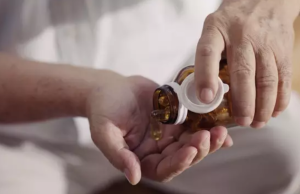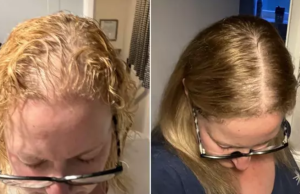Pesticides in Tea: Is Your Favorite Tea Contaminated with H.a.r.mful Chemicals?

There’s nothing nicer than sipping on a warm cup of herbal tea on a cold midwinter’s day. But besides being tasty and warming, tea provides a host of different health benefits – that is, unless your tea is soaked in pesticides.
CBC News recently conducted an investigation on the pesticide levels in some of the most major tea-producing companies. Using an accredited lab, the investigators utilized testing methods employed by the National Food Inspection Agency to test pesticide residues on dry tea leaves.
Pesticides in Tea
The investigators at CBC found that over half of all teas tested had pesticide residues that were above the legally acceptable limit.
Multiple chemicals were found in 8 out of 10 teas, with one brand of tea containing over 22 different types of pesticides
A large majority of these pesticides are currently being banned in several countries due to the health risks they pose to workers that handle them, and the negative effects they have on the environment (as well as the health of those that consume the products).
What Tea Has The Most Pesticides?
In 2014, CBC tested 10 different brands of tea for pesticides. Half of the teas tested contained pesticide residues above the allowable limits in Canada. And eight of the 10 brands tested contained multiple chemicals, with one brand containing residues of 22 different pesticides.
Greenpeace also released a study exposing many popular tea brands that contain high levels of pesticide residues. Some brands of tea even tested positive for DDT, an incredibly toxic pesticide that was banned years ago.
To view the full results and pesticides used in each tea, you can find them here (CBC), here (Greenpeace), and here (Glaucus).
Not Just Pesticides
It isn’t only pesticides you should be concerned about in your teas, either. Heavy metals, natural flavors, and plastics are just a few additional things you need to take into consideration before you settle in for a cup of your favorite brew of tea.
Toxic Tea Contains Fluoride and Pesticides.
Many organic teas contain multiple pesticides, heavy metal residues and fluoride. If the tea leaves are sprayed with pesticides, and many of them are, then not washed off, those toxins will wind up in your tea cup. Heavy metals and fluoride come from the soil that the tea plant is grown in and it accumulates in the leaves over time. Older leaves will have more toxins and these are the ones often used by many companies to make tea, since it is cheaper.
Mold in Tea Bags.
Tea leaves are susceptible to mold growth and mycotoxins depending on how they are grown, stored and fermented and organic tea grown without fungicides are particularly prone.
GMO Teabags.
Even organically grown and harvested tea might be found in tea bags that are made from plastic, GMO corn and bleached paper, all of which leach out into the hot water and get absorbed by our body. Some paper tea bags are treated with epichlorohydrin, a plastic that helps to keep the bags from breaking. The problem is that epichlorohydrin can break down in hot water and be released into your tea. The EPA (Environmental Protection Agency) has reported this chemical can cause c.a.nc.e.r and i.n.f.er.t.i.li.t.y.
“Natural” Flavors are not actually natural.
Natural flavors can contain solvents, emulsifiers, and preservatives that aid in separating the natural flavor complex from the original botanical source.
Just one natural flavor can contain between 50 to 100 ingredients and yet it’s still described as a singular “natural flavor” to you, the consumer.
Ingredients like natural and/or artificial flavors are often produced by fractional distillation and chemical manipulation of various chemicals like crude oil or coal tar. It doesn’t sound like something anyone wants in their morning tea.
What is the solution to the toxic tea problem? Here is how to avoid buying toxic tea:
1. Grow your own tea herbs to dry and store in mason jars as your own personal tea blends.
2. Buy loose leaf tea and brew your own tea from scratch.
3. When possible, avoid tea from China.
4. Buy organic, non-GMO certified brands of tea.
5. Check the ingredient list to make sure there are no added flavors or GMO ingredients added to the tea leaves.
6. Many restaurants use tea brands that are known to be full of pesticides, so consider not ordering tea while out to eat.
Source:drtaniadempsey.com, livelovefruit.com, cbc.ca, wayback.archive-it.or















